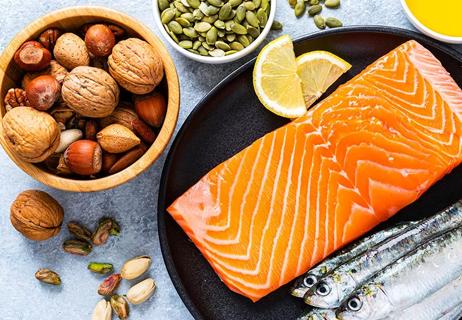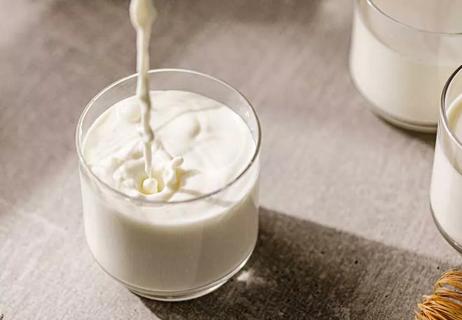This edible insect powder can be a good source of protein, fiber and other nutrients

Across the globe, we humans make meals out of mammals and fish and mollusks and even amphibians. So, why not insects, too?
Advertisement
Cleveland Clinic is a non-profit academic medical center. Advertising on our site helps support our mission. We do not endorse non-Cleveland Clinic products or services. Policy
Entomophagy, or eating insects, is common in many parts of the world, with as many as 2 billion people relying on insects for at least some portion of their protein intake. And that number is growing.
“People have been eating bugs forever,” says registered dietitian Beth Czerwony, RD, LD. “This isn’t a new thing. But in the last few years, we’re seeing new interest in it from people who hadn’t previously considered it.”
Not all insects are edible, of course — but more than 1,900 types of them are! In fact, in 2013 the Food and Agriculture Organization of the United Nations (FAO) issued a report called Edible Insects, which explored the way that eating insects can help with “diversifying diets and improving food security.”
In North America, acheta powder, aka cricket powder, is becoming more and more popular among people who want to experiment with more environmentally friendly ways to get enough protein. Here’s what you need to know about eating crickets.
Worldwide, crickets are the fourth most popular edible insect, behind beetles, caterpillars and flying insects like bees and wasps.
“Crickets are very high in protein per volume, and science is finding that they’re easier to farm than animals are,” Czerwony says, “so more and more, we’re seeing crickets processed into protein powders.”
Advertisement
Crickets also have a surprisingly neutral taste — a little bit nutty maybe, but nothing particularly strong or distinct.
Curious? Here are some of the potential benefits of eating crickets or acheta protein.
Crickets themselves are about 65% protein, which means that when they’re milled (ground down), they turn into a powder or flour that’s also high in protein. A pound of cricket powder can be made up of as much as 77% protein, although the amount differs from product to product.
A 2019 study found that some crickets (though not all) are a complete protein source.
“Protein is made up of essential and non-essential amino acids,” Czerwony explains. “A food is called a complete protein source when it contains all nine essential amino acids in the right proportions for ideal functioning.”
Though the U.S. Department of Agriculture (USDA) doesn’t list crickets in its food database, studies show that the nutritional profile of crickets depends on the type of cricket you’re eating. The way they’re prepared matters, too (roasting is healthier than deep-frying, for example).
In general, all crickets are high in B vitamins, which play a big role in providing you with energy, creating blood cells and preventing DNA damage. Crickets also have a variety of micronutrients, including:
“All the nutrients that are found in bones, you’re going to find in crickets,” Czerwony says, “because you’re eating their exoskeletons.”
But again, the amount of each of these micronutrients depends on the type of crickets you’re eating, the way they’re prepared and other factors.
Crickets are a good source of polyunsaturated fatty acids, aka “good” fats. They support heart health support your heart health when used in moderation.
Other types of meat don’t have any fiber at all. But crickets do.
“A whole cup of crickets amounts to half of your fiber intake for the day,” Czerwony says, “though you’d have to eat a lot of crickets to get all of that.”
If you find that whey protein powder makes you feel bloated or gives you a bellyache, you may find acheta protein easier on your stomach. That’s thanks to chitin, a type of insoluble fiber found in the cricket exoskeleton, which studies find can be beneficial for gut health.
“Chitin has anti-inflammatory properties, which is good for your gut,” Czerwony says, “so if you’re experiencing gut issues or just want to change up the biodiversity of your gut microbiome, acheta protein could be a good thing to try.”
Eating the right foods can help strengthen your gut microbiome and the “good” bacteria that live in it, which can improve your overall gut health.
Advertisement
Insects are cold-blooded, which makes them more efficient at turning the food they eat into pure protein. According to the Edible Insects report, crickets need just 2 kilograms of feed for every 1 kilogram of body weight gain. Cattle, on the other hand, needs a whopping 12 times more feed to produce the same amount of protein.
Not all types of crickets can be farmed, but in countries like Laos, Thailand and Vietnam, cricket farming has become increasingly popular. Importantly, it has a very low carbon footprint and doesn’t require fancy tools or equipment; often, people do it in their own backyards. All of this is good for the environment.
“It’s definitely something to be mindful about as we continue to see issues related to climate change, farming and land,” Czerwony says. “Could crickets be an appropriate alternative for protein? Absolutely.”
Eating crickets comes with some possible downsides, Czerwony notes, including its impact on your wallet. Here are the cons to consider when you’re looking into acheta protein.
Despite how many people around the world rely on insects for food, the benefits of acheta protein haven’t been widely studied. There’s just not much for healthcare providers to go on, in terms of understanding their benefits or risks.
Advertisement
Crickets are teeny-tiny little guys, so even though they have health benefits, it’s not clear just how much you’d need to eat to get those benefits. “At this point, there just aren’t studies out there that confirm, ‘You need to eat this many grams to achieve the benefits,’” Czerwony says.
Chitin, the insoluble fiber found in cricket exoskeletons, is thought to play a role in some allergic reactions. And you’re more likely to be allergic to crickets if you already know you’re allergic to, say, shrimp and lobster.
“If you’re allergic to shellfish, you shouldn't have crickets,” Czerwony advises. (The same is true, by the way, of eating cicadas!)
In the U.S., protein powders are considered dietary supplements, and dietary supplements aren’t regulated by the U.S. Food and Drug Administration (FDA). That means there’s no way to know for sure that you’re getting what the package says you’re getting, in terms of amount and ingredients.
“You can’t really know how much actual cricket protein you’re getting versus cricket exoskeleton,” Czerwony warns, “and you don’t necessarily know what additives or byproducts are in there.”
Ready to feel a little bit unsettled? In 2018, a European study examined 300 insect farms and found parasites in 244 of them. At 30% of those farms, they found parasites that may carry diseases to humans, reporting, “Edible insects are an underestimated reservoir of human and animal parasites.”
Advertisement
It’s important to note, though, that the most frequent infestations found among crickets don’t cause diseases in humans. And other meat sources can be carriers of parasites, too, so this risk isn’t unique to crickets.
“I would just tell people to be cautious,” Czerwony says. “If you do want to buy crickets or acheta protein, do your research first to understand the source.”
Although crickets are a relatively inexpensive protein to farm and produce, the same isn’t necessarily true of cricket protein powder. Some brands run as much as $60 per pound, which adds up quickly, if you can afford it at all — and you’ll pay more for quality.
“Products of a higher purity are going to be more expensive,” Czerwony adds.
If you’re interested in eating crickets, whether whole or in the form of protein powder or flour, there’s no harm in giving it a go (unless you have a shellfish allergy!).
“Some people want to try it because it’s becoming trendy,” Czerwony says, “but this is one of those times when there are actually nutritional benefits associated with the trend.”
If crickets don’t appeal to you or aren’t in your budget, you don’t need to try them or replace all of your protein powder with a blend of Jiminy’s buddies.
But if you do want to give it a try, here are some suggestions for how to use cricket powder:
“Given its price, I suggest finding ways to make it last a little while,” Czerwony suggests. “Start by playing around with adding cricket flour to products like muffins or breads, to see if it’s something you want to invest in.”
Learn more about our editorial process.
Advertisement

Some options like chicken breast and beans are better for you than processed meats or dairy

Protect and build muscle while getting essential amino acids and calcium with this protein

Going overboard on protein can lead to weight gain and kidney damage, among other issues

It’s nutritious, offers fiber, antioxidants and protein, and is good for food sensitivities

Complete proteins contain all of your essential amino acids

An expert explains the type of pea proteins and the benefits

The short answer from a dietitian about mixing protein powder and coffee

This popular trend could be doing more harm than good

Type 2 diabetes isn’t inevitable with these dietary changes

Applying a hot or cold compress can help with pain